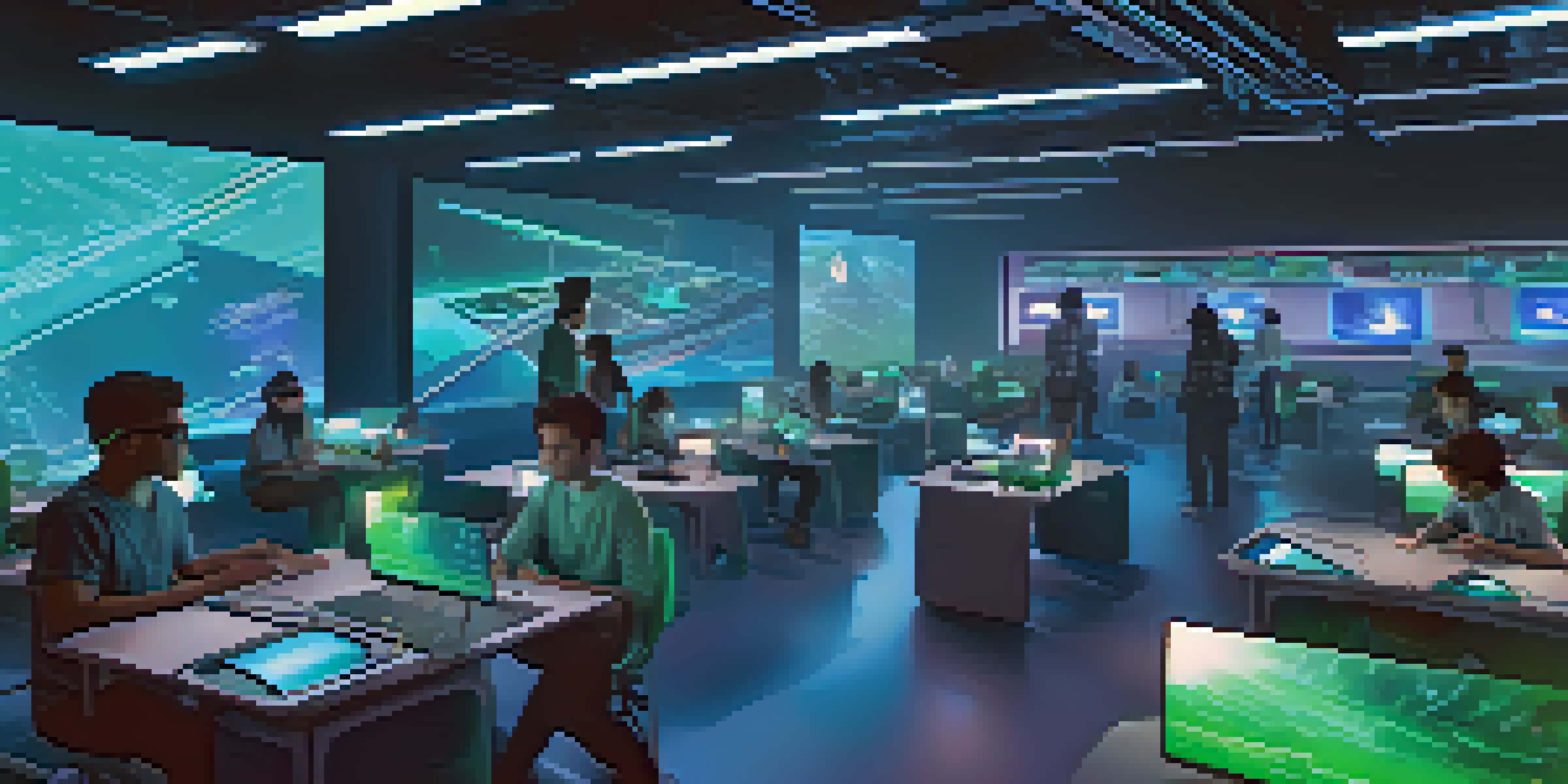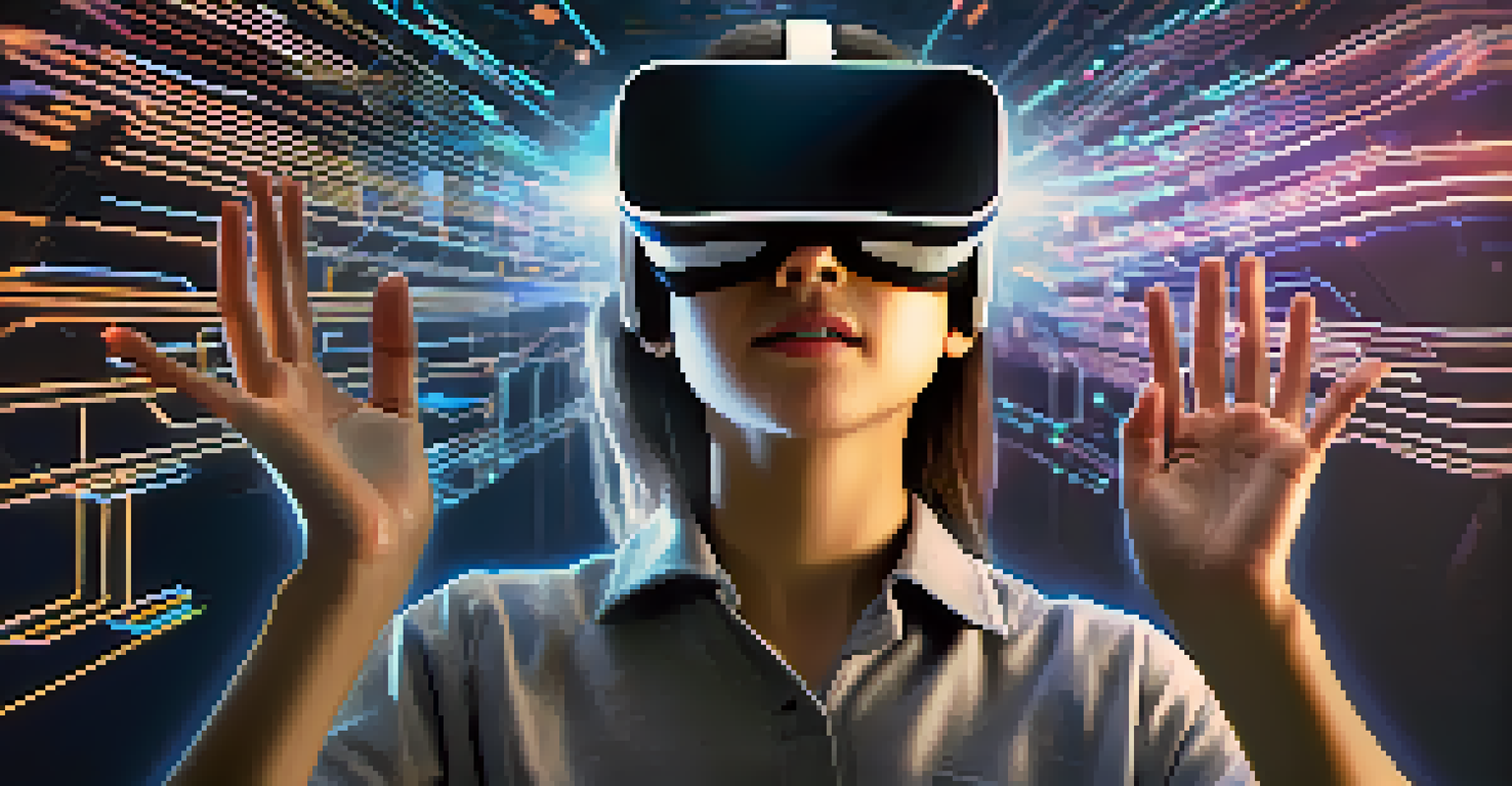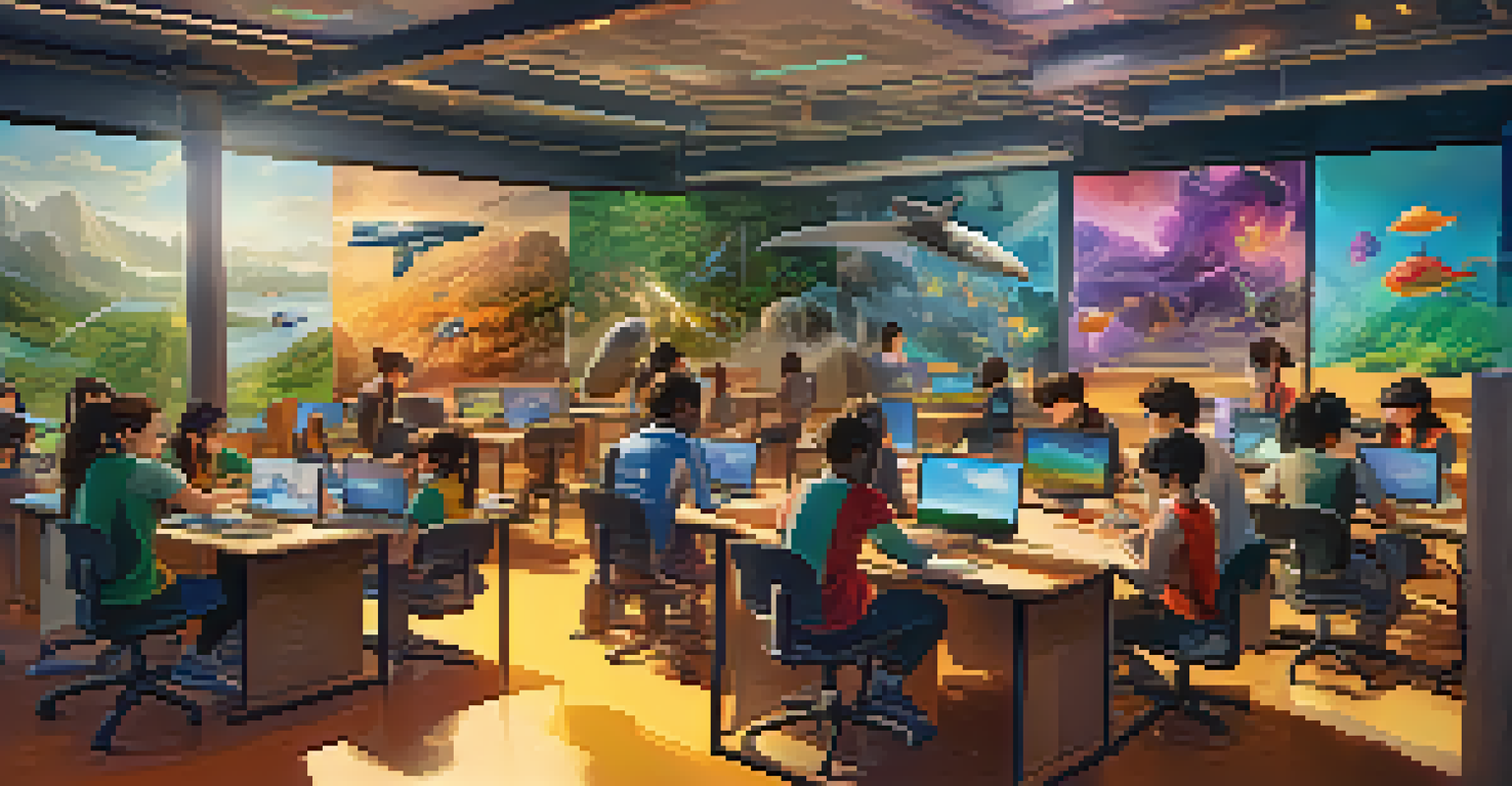Using Virtual Reality for Teaching Coding and Programming Skills

Introduction to Virtual Reality in Education
Virtual reality (VR) is changing the landscape of education, making learning more engaging and immersive. Traditionally, coding and programming skills were taught in a classroom setting, often with limited interaction. However, with the rise of VR, educators can create dynamic learning environments that captivate students' attention and enhance their understanding.
Virtual reality is the first step in a grand adventure into the landscape of the imagination.
Imagine stepping into a 3D world where you can manipulate code visually, rather than just reading it on a screen. VR provides an interactive experience that allows learners to see the immediate impact of their coding decisions. This hands-on approach makes complex concepts more digestible and encourages exploration and experimentation.
As the technology continues to evolve, more educational institutions are adopting VR tools to teach coding. By merging the digital with the physical, students can experience coding in a way that feels intuitive and fun, paving the way for a new generation of programmers.
Benefits of Using VR for Teaching Coding
One of the most significant advantages of VR in coding education is increased engagement. Traditional coding lessons can sometimes feel dry or overwhelming, but VR transforms this experience into something interactive and exciting. Students can immerse themselves in a virtual environment, making learning both enjoyable and effective.

Additionally, VR promotes active learning, which has been shown to enhance retention rates. When students interact with coding concepts in a virtual space, they engage all their senses, which can lead to better understanding and memory. This immersive experience can also cater to different learning styles, helping to reach students who might struggle with conventional teaching methods.
VR Enhances Coding Education
Virtual reality transforms coding lessons into engaging, interactive experiences that promote better understanding and retention.
Moreover, VR allows for real-time feedback, which is crucial when learning to code. Students can experiment with different coding techniques and instantly see the results of their actions, fostering a trial-and-error mindset that is essential in programming.
How VR Creates a Safe Learning Environment
Learning to code can be intimidating, especially for beginners. VR provides a safe space for learners to make mistakes without the fear of real-world consequences. In a virtual setting, students can explore coding challenges and fail safely, which is an essential part of the learning process.
Education is not the filling of a pail, but the lighting of a fire.
This controlled environment encourages learners to take risks and push their boundaries. They can experiment with different coding languages and techniques, knowing that they can always reset and try again. The safety net of VR fosters a growth mindset, where students are more likely to embrace challenges rather than shy away from them.
Furthermore, VR can simulate real-world applications of coding, allowing students to see the impact of their work in a safe context. For example, they might create a virtual game or app and test it within the VR environment, gaining a deeper appreciation for the coding process and its outcomes.
Interactive Learning Through Gamification
Gamification is a powerful tool in education, and when combined with VR, it can revolutionize how coding is taught. By incorporating game-like elements into coding lessons, educators can motivate students to engage more deeply with the material. This approach turns learning into a fun and competitive experience.
In a VR setting, coding challenges can be structured as quests or missions, where students earn points or rewards for completing tasks. This not only adds an element of excitement but also encourages collaboration among peers, as they can work together to solve problems and share their progress.
Safe Space for Learning Coding
VR creates a risk-free environment where students can experiment with coding techniques without real-world consequences.
Moreover, gamification helps break down complex coding concepts into manageable chunks. Students can progress through levels, mastering one skill before moving on to the next, which reinforces their learning and builds confidence.
Tailoring VR Experiences to Different Learning Styles
Every student learns differently, and VR enables educators to tailor experiences to suit various learning styles. Visual learners, for instance, benefit from the 3D representations of coding concepts, which can make abstract ideas more concrete. Meanwhile, auditory learners can gain insights from interactive tutorials and verbal instructions within the VR environment.
Kinesthetic learners, who thrive on hands-on experience, will find VR particularly beneficial as it allows them to physically manipulate coding elements. This multi-sensory approach ensures that all learners can engage with the material in a way that resonates with them, ultimately leading to better learning outcomes.
By adapting VR experiences to different learning styles, educators can create a more inclusive environment that supports all students. This personalized approach can boost confidence and foster a love for coding, encouraging students to pursue programming further.
Preparing Students for Real-World Coding Challenges
As technology continues to evolve, the demand for skilled coders is on the rise. VR not only teaches coding skills but also prepares students for real-world challenges they may face in their future careers. By simulating workplace scenarios, students can practice problem-solving in a realistic context.
For instance, a VR coding environment can present students with common coding bugs or design issues they might encounter in a job setting. This hands-on practice allows them to develop critical thinking skills and learn how to troubleshoot effectively, which is invaluable in the tech industry.
Gamification Boosts Engagement
Incorporating game-like elements in VR coding lessons motivates students and makes learning more enjoyable and collaborative.
Furthermore, exposure to real-world applications of coding within VR can inspire students to think creatively about how they can use their skills. They can envision themselves as future developers, engineers, or innovators, making the connection between their education and career aspirations.
The Future of VR in Coding Education
As we look to the future, the integration of VR in coding education is only expected to grow. With advancements in technology, VR tools are becoming more accessible and affordable for schools and educators. This trend opens up new possibilities for immersive learning experiences that can benefit students across the globe.
In addition, as more educators recognize the potential of VR, we can expect a surge in innovative teaching methods that leverage this technology. The ability to create tailored, interactive lessons will empower teachers to engage students in exciting new ways, making coding more appealing than ever.

Ultimately, the future of coding education lies in embracing these advancements. By harnessing the power of VR, we can inspire a new generation of coders who are not only skilled but also passionate about technology and its potential to shape the world.